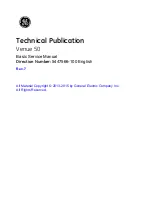
Disassembly and assembly
04.00|0889132_ROTA TB2 / ROTA TB2 LH |en
61
Mounting of optional mechanical pressure monitoring system
In general, the working pressure may only be inspected for O.D.
clamping.
1 Loosen set-screw (pos. 103) at the circumference of the chuck
body.
2 Remove lock (pos. 69) with the extension (pos. 99) and the O-
rings (pos. 105) from the lathe chuck from the front.
3 Remove extension (pos. 99) from the lock (pos. 69). The
extension is used for the mechanical pressure monitoring (see
below).
4 Carefully insert the sleeve (pos. 98) with O-ring (pos. 102) into
the chuck bore to the stop.
5 Carefully insert sleeve (pos. 95) with inserted O-rings (pos. 105
and 106) with longer thread rods (M3) into the lower bore
hole.
6 Tighten set-screw (pos. 103) radially in the chuck body.
7 Firmly stick together the piston (pos. 94) with extension (pos.
99). After the drying time, insert O-ring (pos. 111) and insert
from the front to the stop into the bore hole of the chuck
body.
8 Insert the springs (pos. 101) into the piston. Screw in locking
screw (pos. 96) with inserted bolt against the spring pressure
into the chuck body.
CAUTION The parts are under spring
tension!
9 Apply fluid screw lock to the threaded pin (pos. 100) and
mount into the bore hole of the locking screw (pos. 96).
10 Depending on the working pressure, the depth
X
of the
threaded pin is adjusted. The values are only a guideline.
X
= 6 mm at 6 bar
X
= 8.1 mm at 8 bar
X
= 3.8 mm at 4 bar.
11 When commissioning the clamping chuck on the machine, it
should be ensured that with the working pressure (O.D.
clamping) the cam (pos. 93) protrudes 2 mm out of the groove
of the mounting (pos. 7) (see fig. "Mechanical queries"). The
cam (pos. 93) is fixed in the extension with a threaded pin
(pos. 107). (For commissioning see chapter 9.1)
8.2.1









































